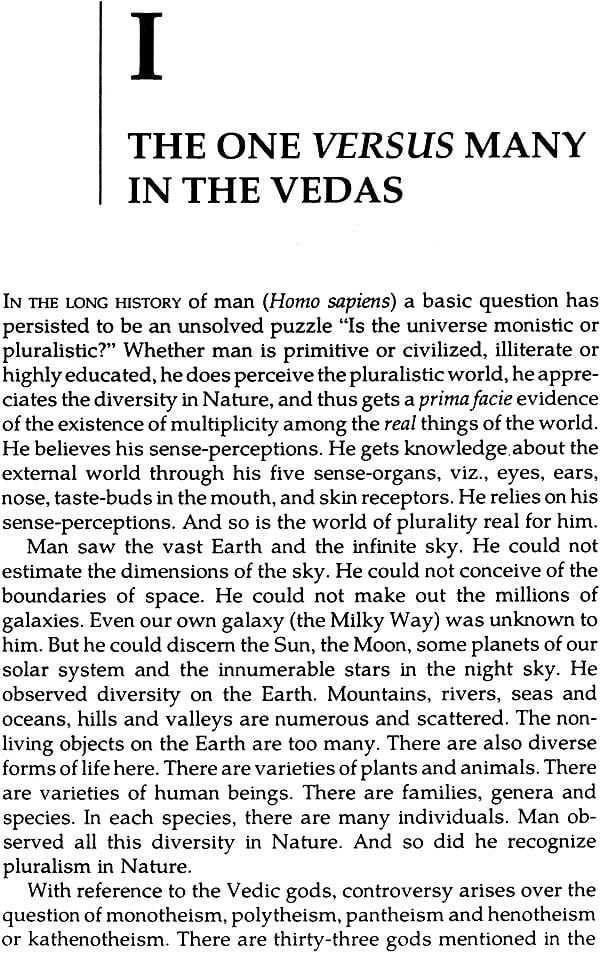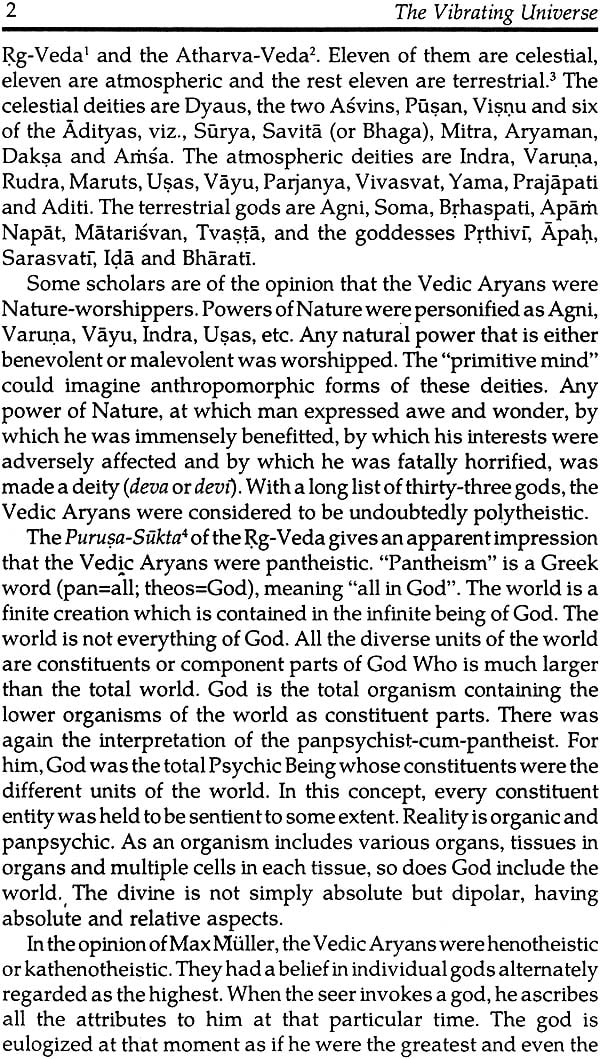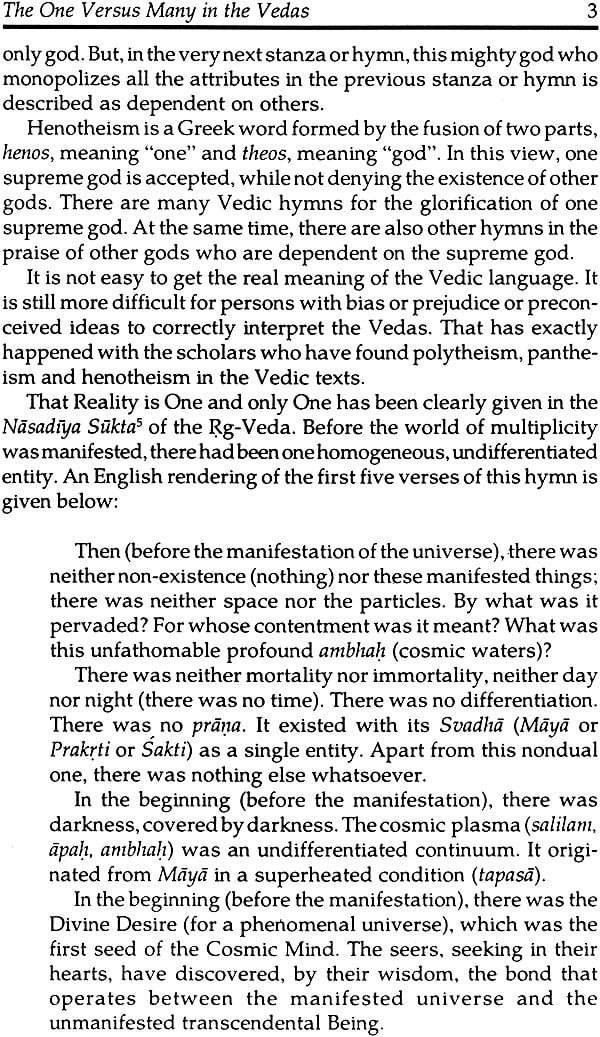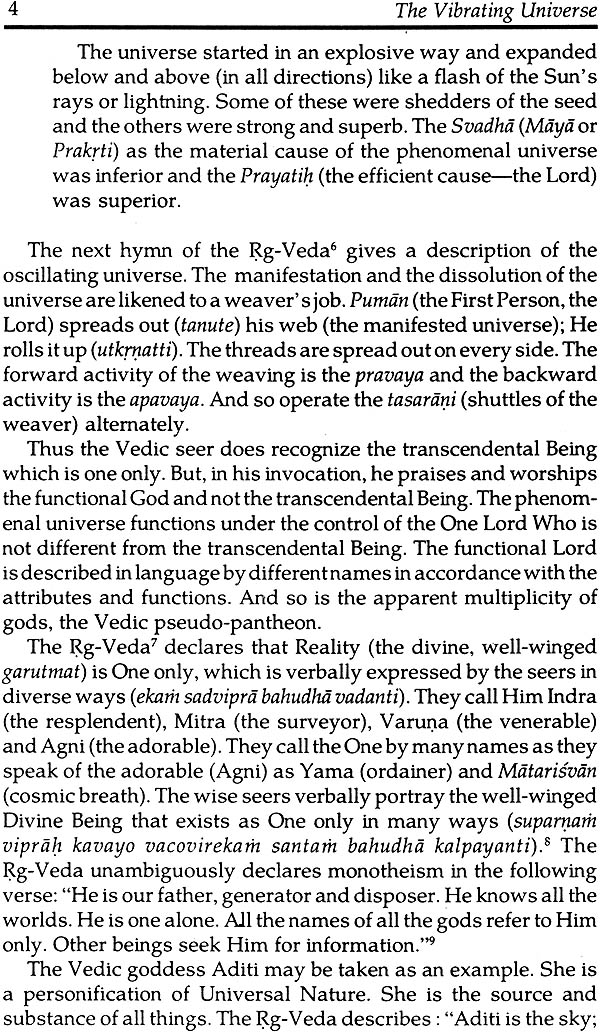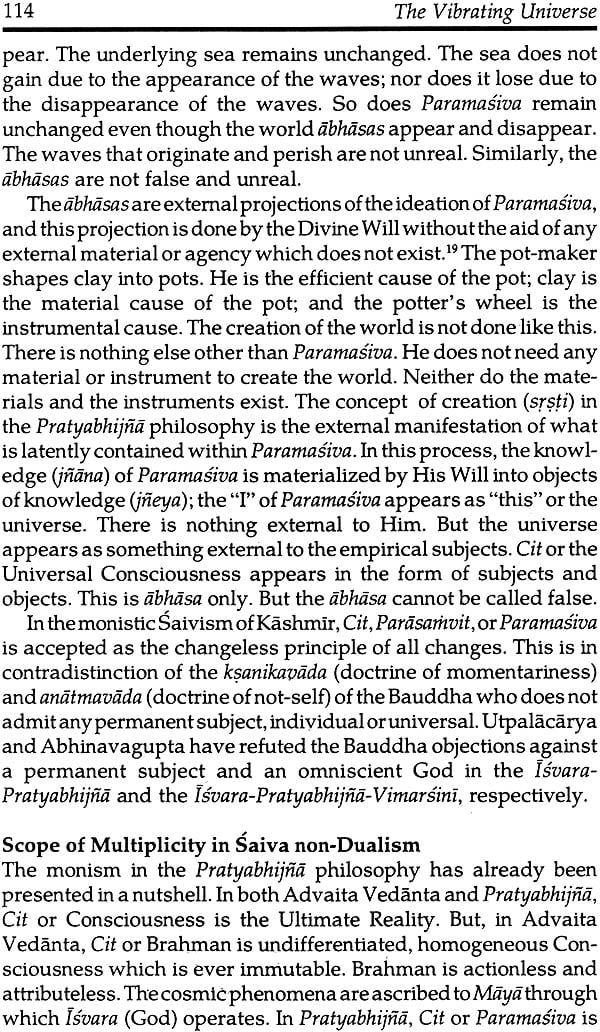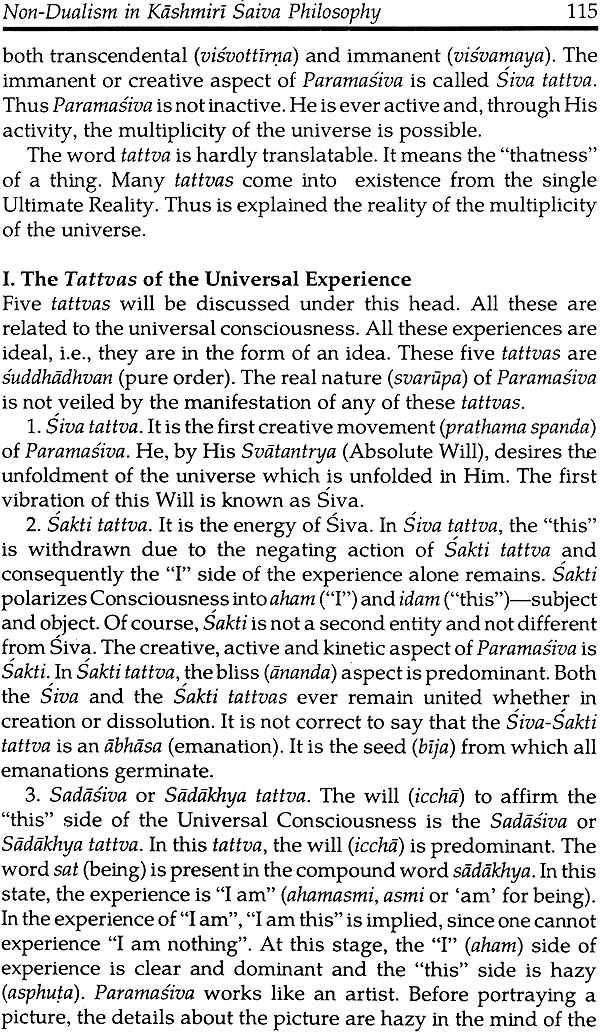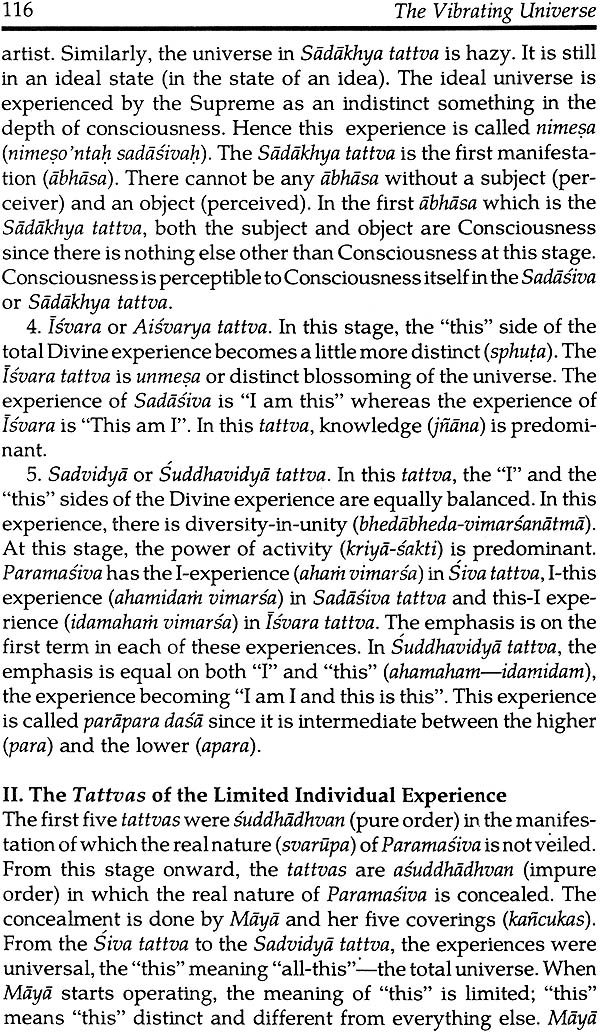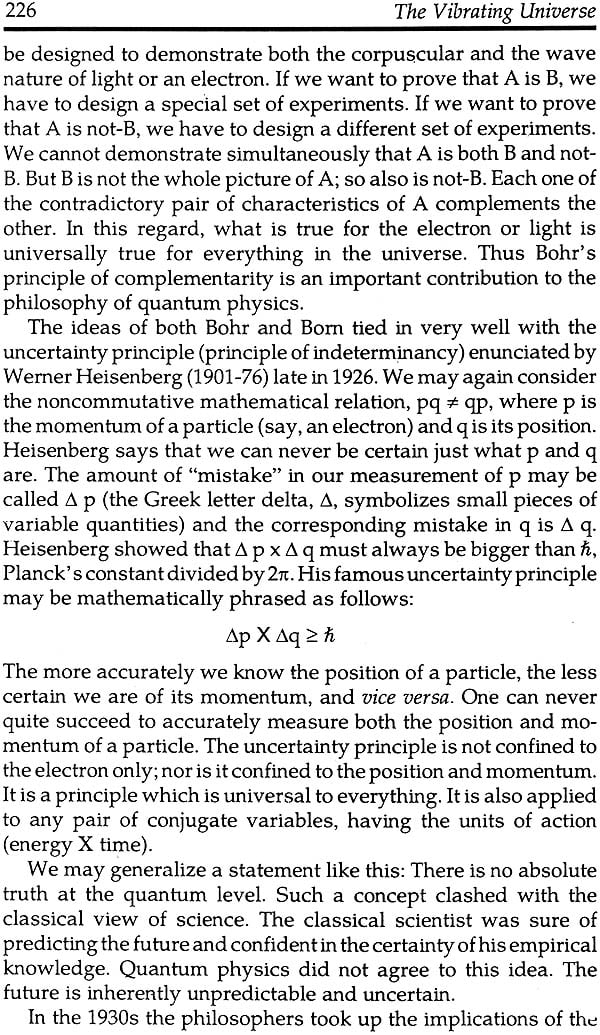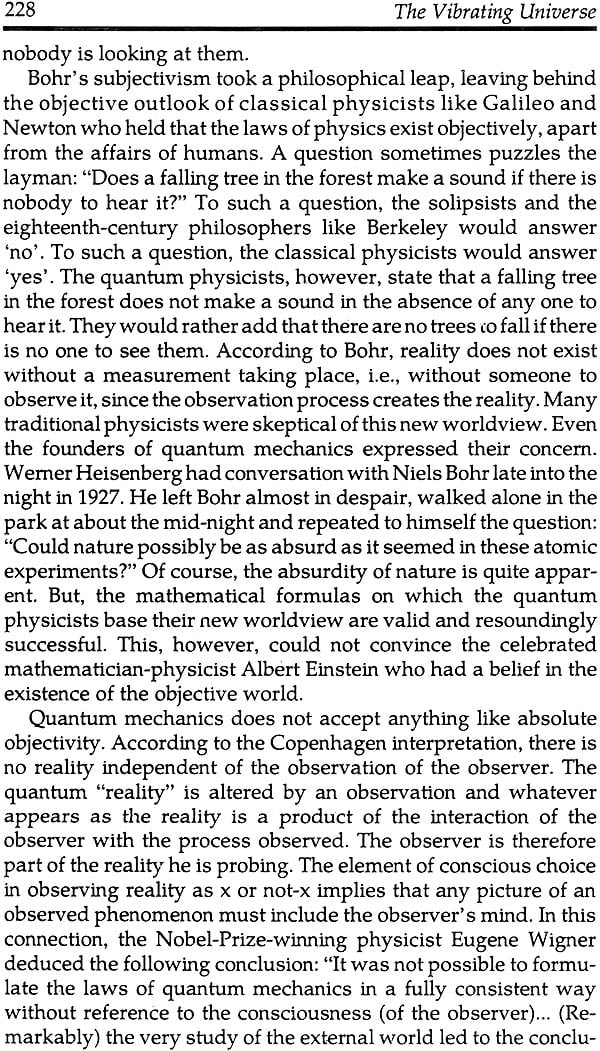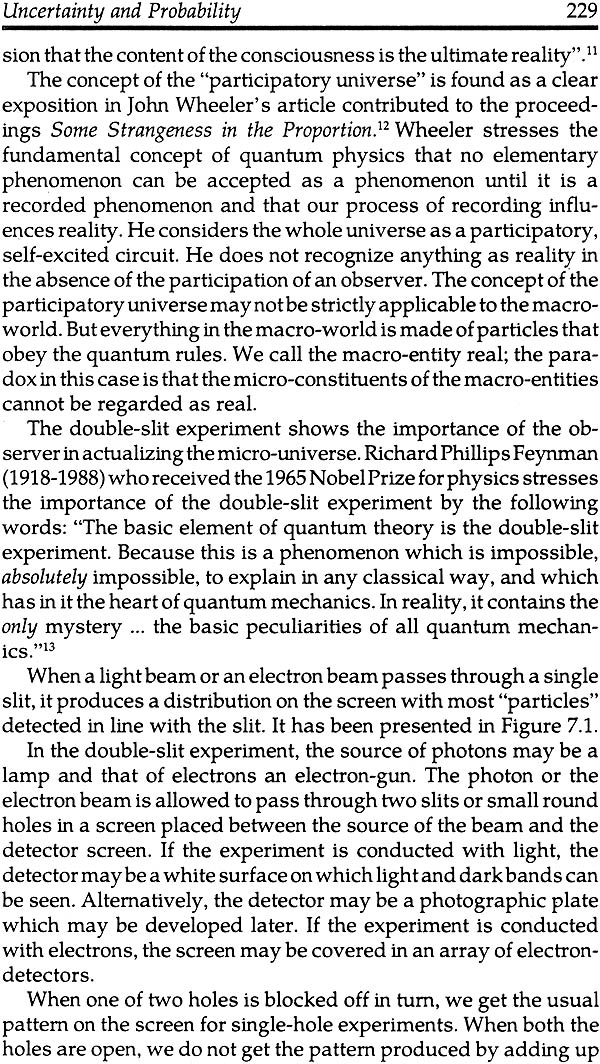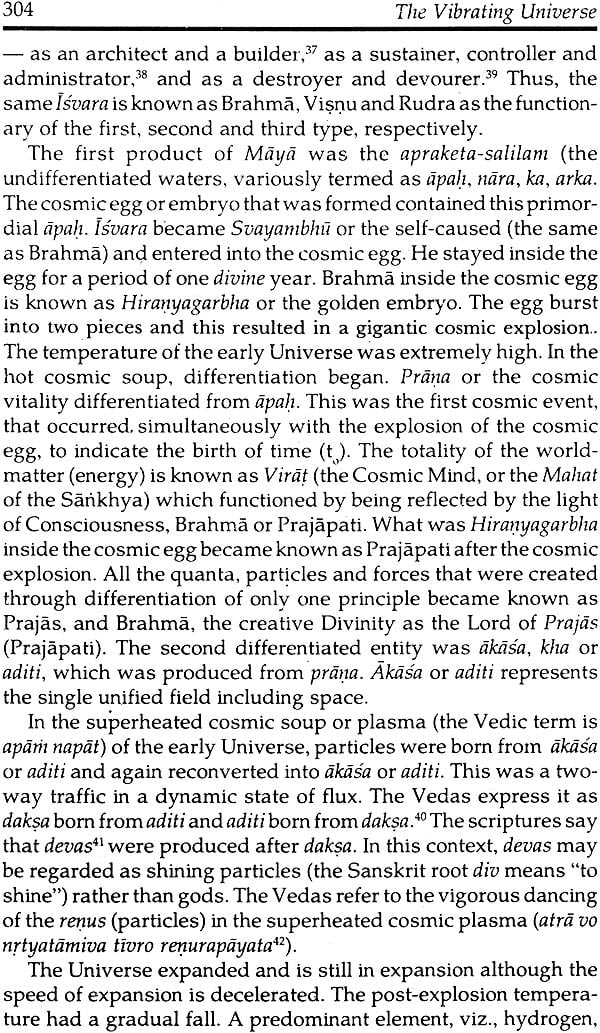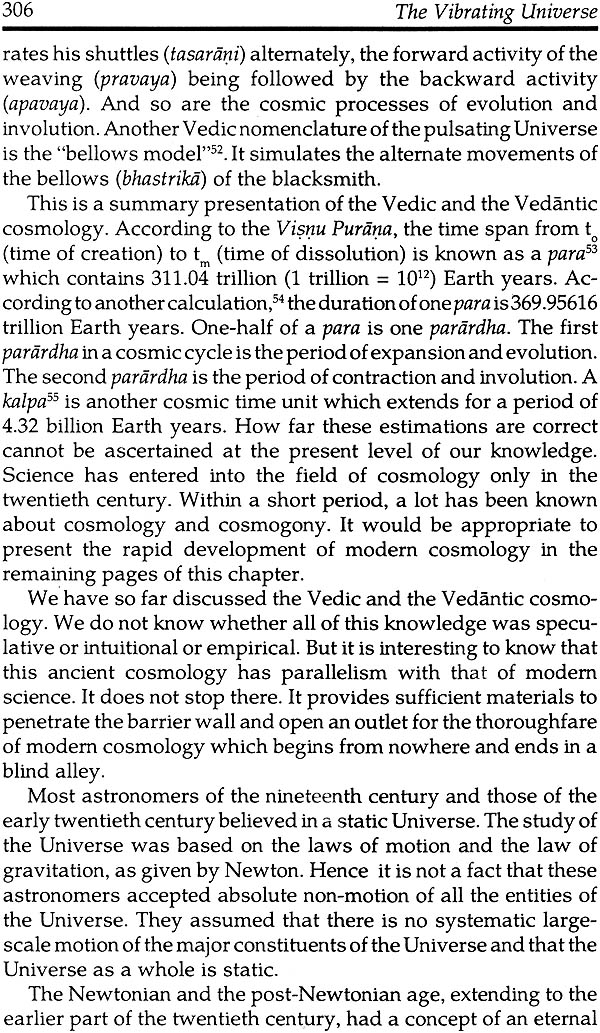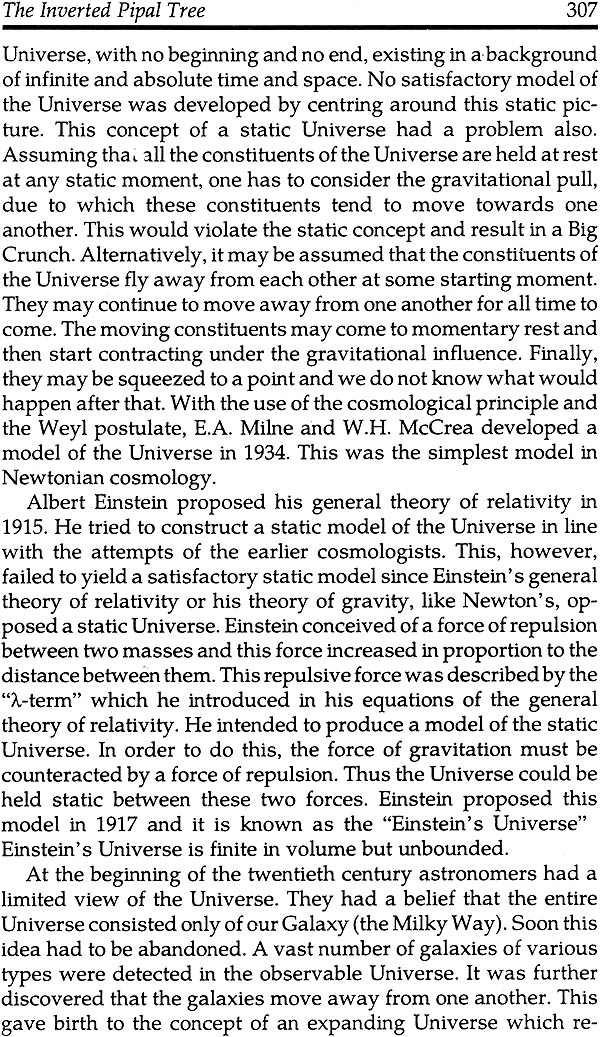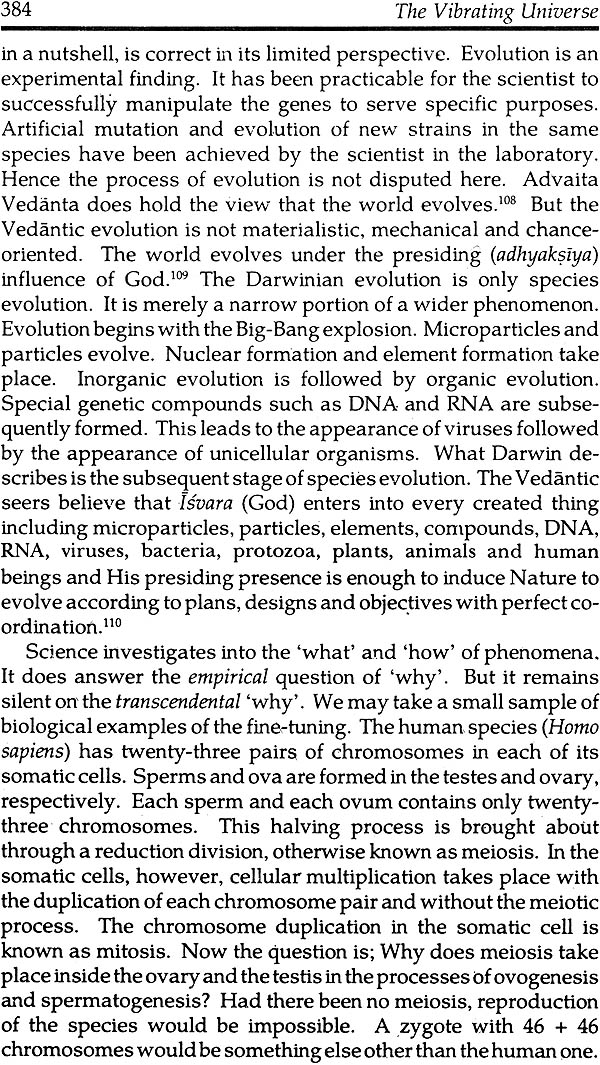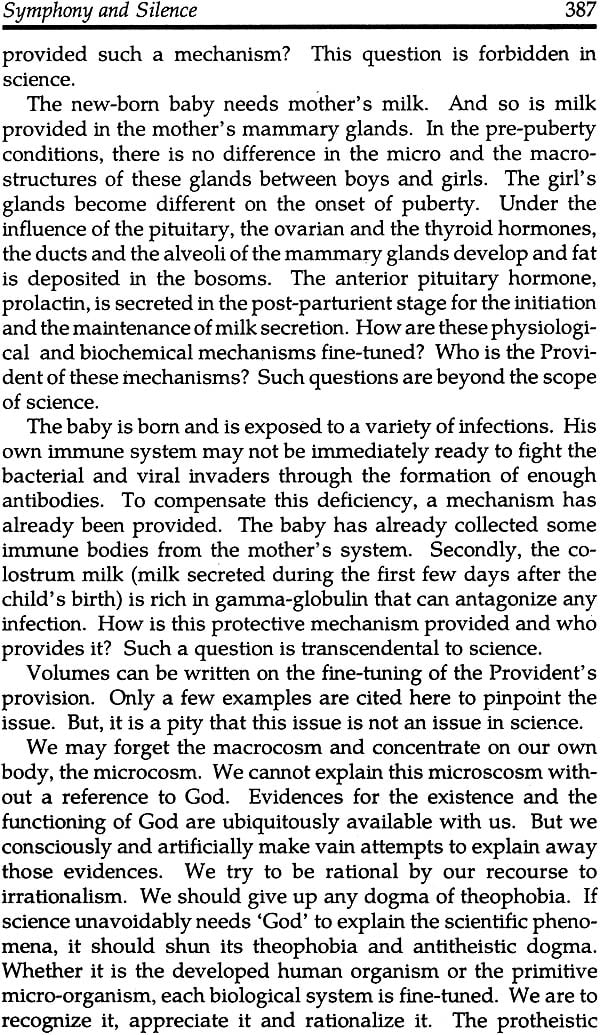
The Vibrating Universe
Book Specification
| Item Code: | IDD342 |
| Author: | N.C. Panda |
| Publisher: | MOTILAL BANARSIDASS PUBLISHERS PVT. LTD. |
| Language: | English |
| Edition: | 2008 |
| ISBN: | 9788120812918 |
| Pages: | 440 |
| Cover: | Hardcover |
| Other Details | 8.7" x 5.7" |
| Weight | 700 gm |
Book Description
From the Jacket
The Vibrating Universe synthesizes the super string theory of modern physics and the vibration concept of Advaita Vedanta and Kashmiri Saivism. The philosophical problem of monism versus pluralism, as given in Indian philosophy, Western philosophy and classical as well as modern science, has been analytically presented. In this attempt, dualism and pluralism have been rejected, and non-dualism has been re-established. A vibration theory has been successfully brought out with a fusion of the doctrines of the Vedantic vibration, the Saiva vibration and the super string vibration of modern physic. A confluence of the concept of non-dualistic Vedanta, Kashmiri Saiva monism, cosmology, astrophysics, super string theory, relativity theory and quantum mechanics is clearly visible in the book. As the vibrations of a violin string produce multiplicity of musical notes, so does the super string that vibrates and thereby generates the apparent plurality of the universe. The Reality is one and only one that always remains unmanifested and unperceived, although not unexperienced. The power of the Reality manifests through the plurality of the phenomenal universe-Maya or Prakrti is constituted of three strings (sattva, rajas and tamas) that vibrate to produce the pluralistic, phenomenal universe.
About the Author
Dr. Nrusingh Charan Panda was born on 20th April, 1929 in the Dhenkanal District of Orissa, India. He obtained his Master of Science and Doctor of Philosophy degrees from the University of Missouri, USA. His field of specialization is Nutritional Biochemistry. At the university level, he was the recipient of the Vice Chancellor's medal, in addition to three more gold medals and the Membership of America's Gamma, Sigma, Delta Society. He worked in the Orissa University of Agriculture and Technology, Bhubaneswar in all cadres of teaching posts and retired in 1992 from the post of the Dean. Subsequent to his retirement, he was honored as a Scientist Emeritus.
Dr. Panda has the rare distinction of being a scientist, a litterateur, a philosopher, and a psychologist. For his novels, he has been honoured with a number of prestigious awards. He has deep insight in the theory and practice of Yoga and Tantra. He is an erudite scholar in Sanskrit and an anlytical researcher in Indology. His ingenious interpretation of the Vedas, the Vedanta, and the allied scriptures, on the basis of modern science, is a distinctive contribution that has been well recognized in the world.
The other famous books of Dr. Panda are Maya in Physics and Mind and Super mind (in two volumes). All his books have been lauded by the intellectuals throughout the world. His approach is integral, synthetic and holistic.
| Prologue | ix | |
| Acknowledgements | xv | |
| List of Abbreviations | xvii | |
| List of Figures/Illustrations | xxi | |
| Chapter-I | The One versus Many in the Vedas | 1 |
| Chapter-II | Vedantic Nondualism | 13 |
| Chapter-III | Nondualism in Kashmiri Saiva Philosophy | 107 |
| Chapter-IV | Pluralism in Indian Philosophy | 133 |
| Chapter-V | Monism, Dualism and Pluralism in Western Philosophy | 157 |
| Chapter-VI | Pluralism in Science | 175 |
| Chapter-VII | Uncertainty and Probability | 215 |
| Chapter-VIII | Unification | 259 |
| Chapter-IX | The Inverted Pipal Tree | 301 |
| Chapter-X | Symphony and Silence | 355 |
| Author Index | 397 | |
| Subject Index | 401 | |
| Greek Letters | 413 | |
| Symbols | 417 |
